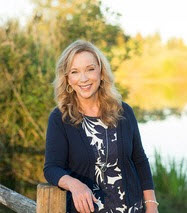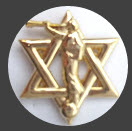In celebration of B'nai Shalom's Jubilee Year (50 years),
Sister Lynda Cherry was our guest speaker.

We discussed the ancient feast days, their witness of Jesus as the Messiah, and their relevance to us now and in the future. She captivated us all as we joined together, as the whole house of Israel, learning of our heritage, honoring the Lord.
These holidays have much meaning for us today. They are important for us to know and to understand, to add to our testimonies.
She added much to our understanding of...
- What are these holidays? What meaning do they have to us?
- Are they important for us to know and to understand?
- When Elijah appeared to the Prophet Joseph Smith on Pesach, what urgent message did he bring?
- How can we apply Sukkot, the Festival of Booths, to our Temple practice in the fullest?
- Was King Benjamin observing the most important festival?
As recorded in Leviticus 23, the Lord gave Moses instruction for seven holy "feast days": three in the spring, beginning with the Passover (Pesach), three at the end of the harvest in the fall, culminating with the Feast of Tabernacles (Sukkot), and one in the middle, Pentecost (Shavuot).
Many mistakenly believe that these holy feasts and festivals pertain only to the Jewish people and to the ancient temple in Jerusalem. However, the commandments and details pertaining to the feasts were given to the whole house of Israel. Prophets who saw the Millennial day prophesied that all nations would participate in Passover and Feast of Tabernacles celebrations (see Zech. 14:16; Ezek. 45).
Evidence of the ancient feasts and festivals may be found throughout ancient and modern scripture.
Elijah appeared, as promised, on a Passover, to restore the keys of the gathering of Israel and the sealing of families to Israel. Moroni directed Joseph Smith to remove the plates that would be translated as the Book of Mormon on the Feast of Trumpets (Rosh Hashanah).
There is reason to believe that the Book of Mormon peoples kept and honored the feast days. King Benjamin followed the "temple script" for the Feast of Tabernacles. Alma followed the "Passover script" in counseling his sons.
Fireside Subjects:
Sister Cherry is willing to teach a series of firesides on each individual feast, its symbolism and meaning. Specialties are ancient temple practices, and how they testify of the Messiah, and also ancient Hebrew Feasts and Festivals. In addition, she can offer these subjects:
- “Looking for Ephraim” — Rabbi Israel’s Letter to the Ten Lost Tribes in 1830
- “The Redemption of the Bride”
- “The Promises Made to the Fathers”
- “I Have Called Thee by Thy Name” — The importance of names on the path to Covenant Discipleship
- “Between the Testaments” — The history between the last prophet of the Old Testament and the opening of the New Testament
- “Women of the Scriptures”
About Sister Cherry
Sister Cherry was converted to the Church of Jesus Christ of Latter-day Saints in her youth, and was particularly drawn to the Church's teachings about covenants and temples. She has a deep understanding and love for the restored Gospel, and for Judaism and for its relevance to us today as a foundation for LDS practices and beliefs.
She was a CES teacher for over 12 years, and has been teaching (and team teaching) adult education classes in the region for years. Her classes impart a deepened understanding, an increased testimony and a passion for the gospel in a holistic sense.
Lynda presented classes at BYU Education Week on the Feasts and Festivals, ancient temple practices, and divine symbolism. She presented at firesides and conferences for several Northwest stakes, and taught Gospel Doctrine for over 15 years. She is working on three important research volumes.
She brings to us great passion about UNITING Israel.
Her audiences have been strengthened and inspired, as you will also be.
Please find the Donate button on the front page; your contribution helps.
Here is a list of downloadable presentation handouts from our local Jewish Gen meetings in LDS Factoria. (Many of the great presentations are not listed here.)
Please enjoy the several issues of our ejournal, the New Shofar, and the original Shofars on our website: http://www.mormonsandjews.org/about/historical/Shofars-History.html.

